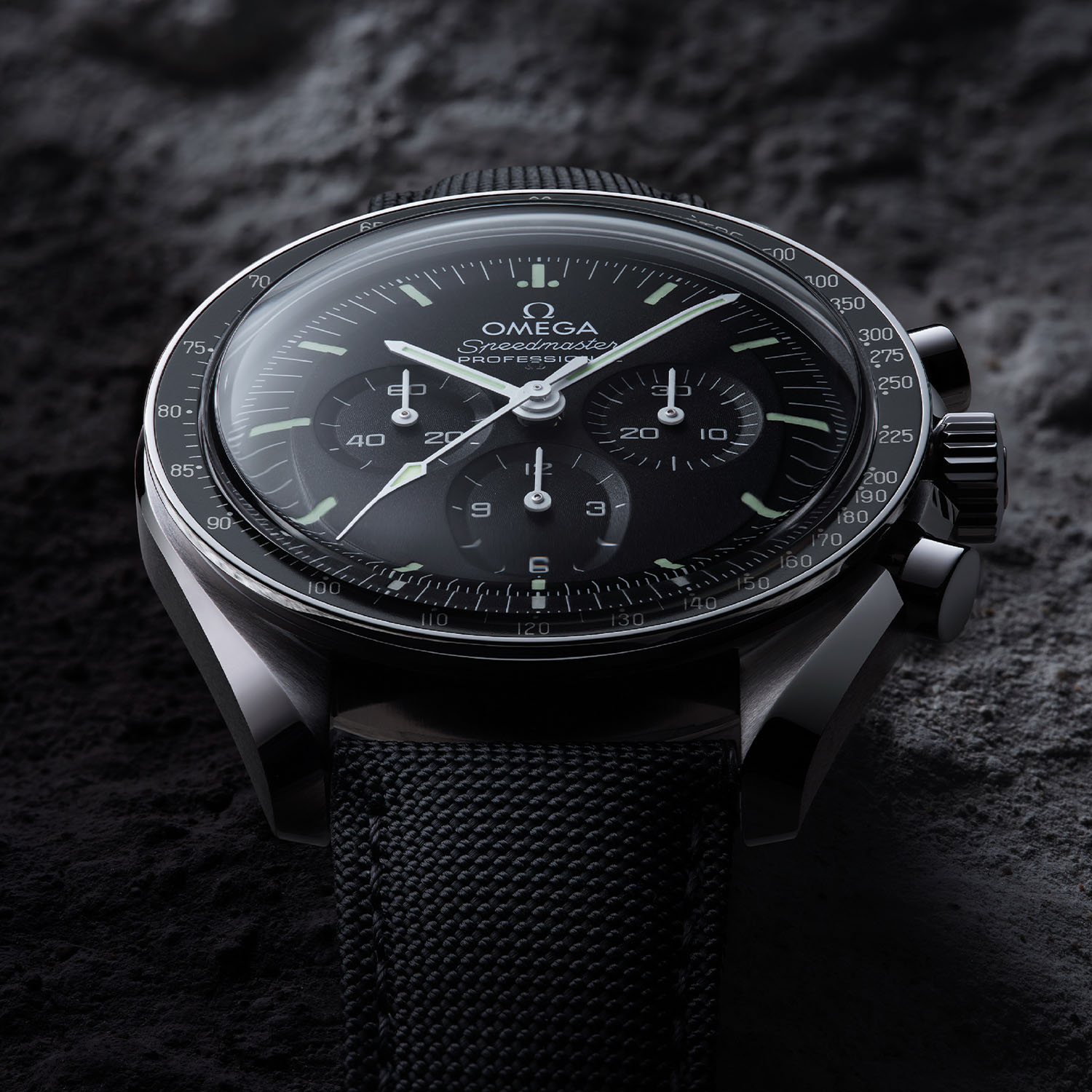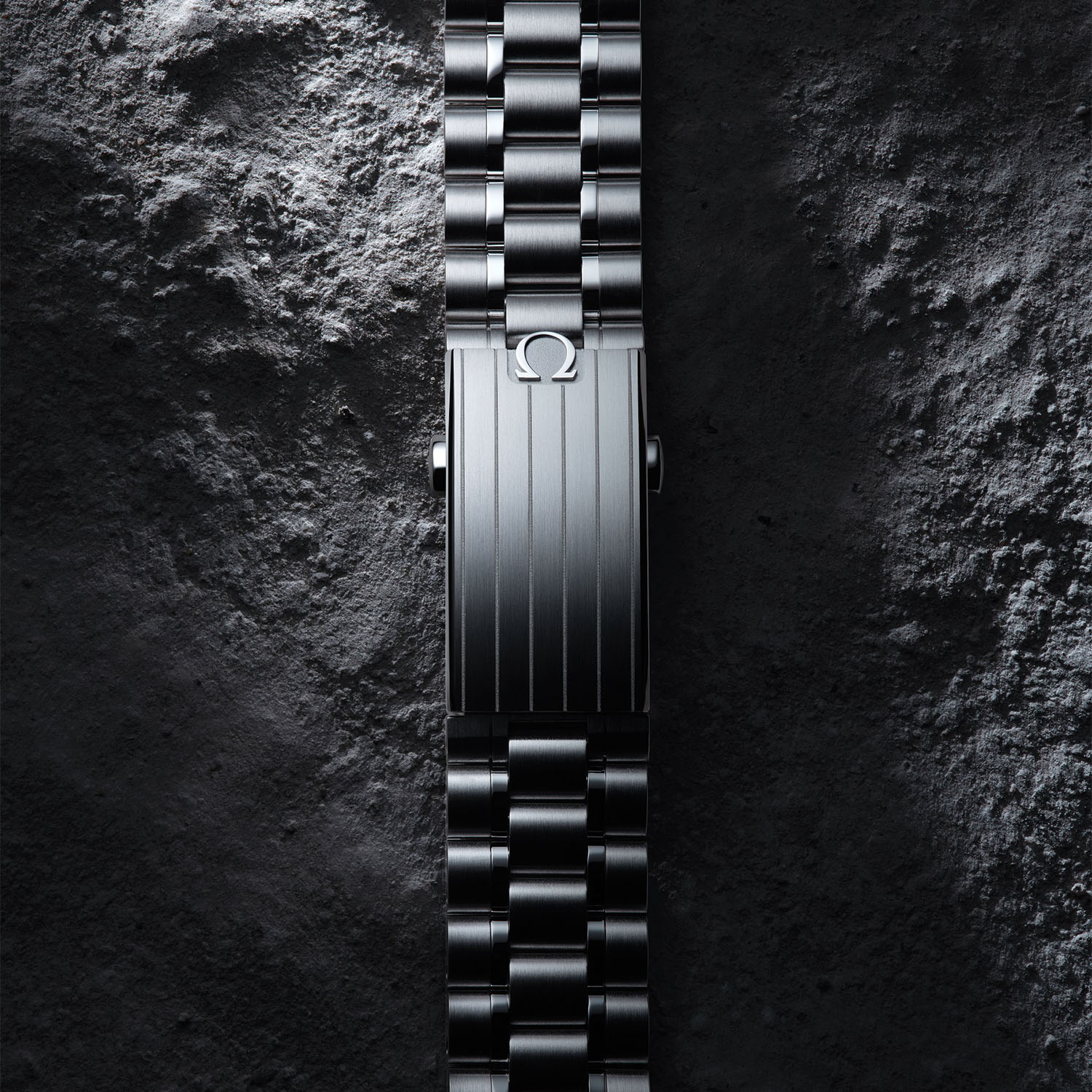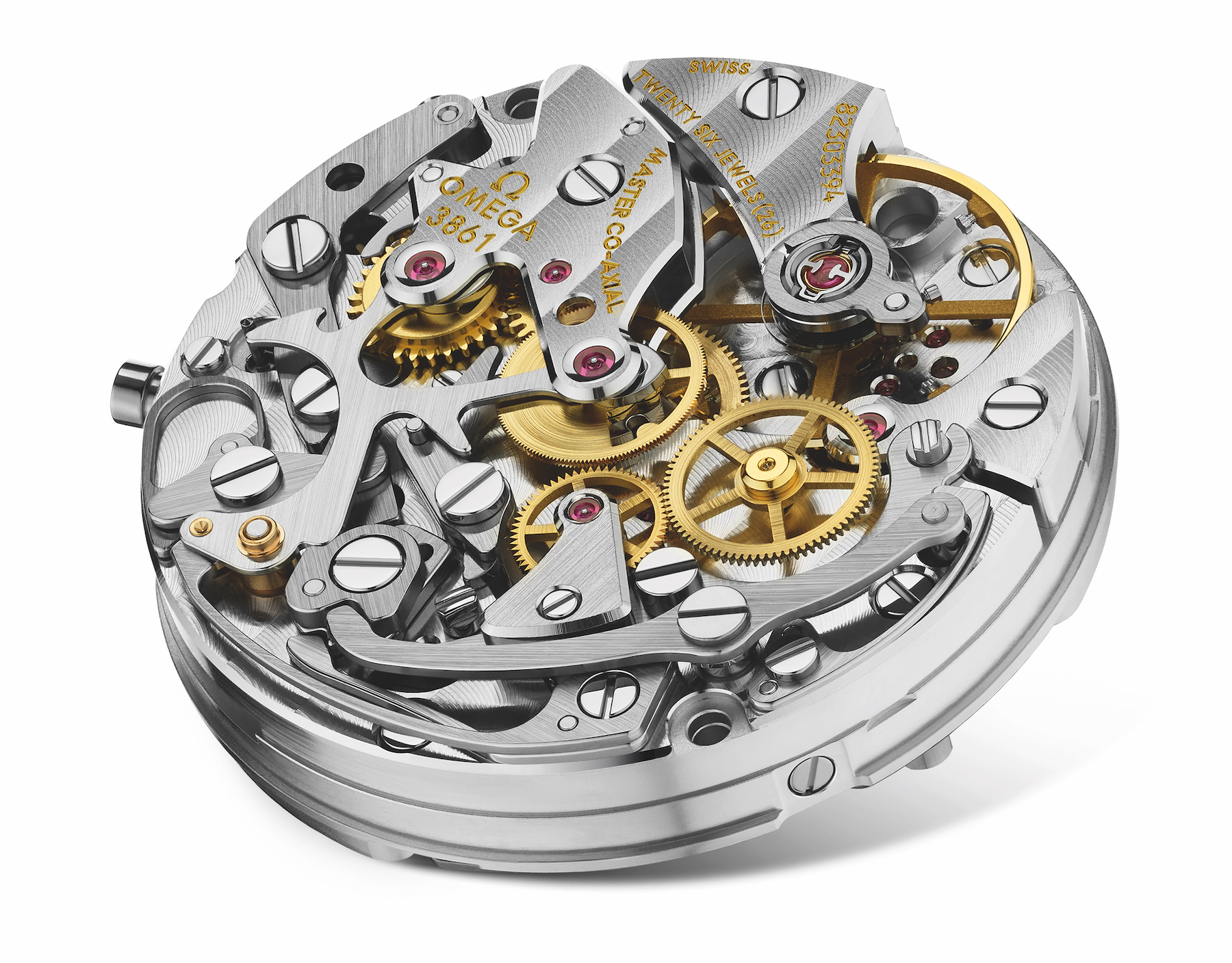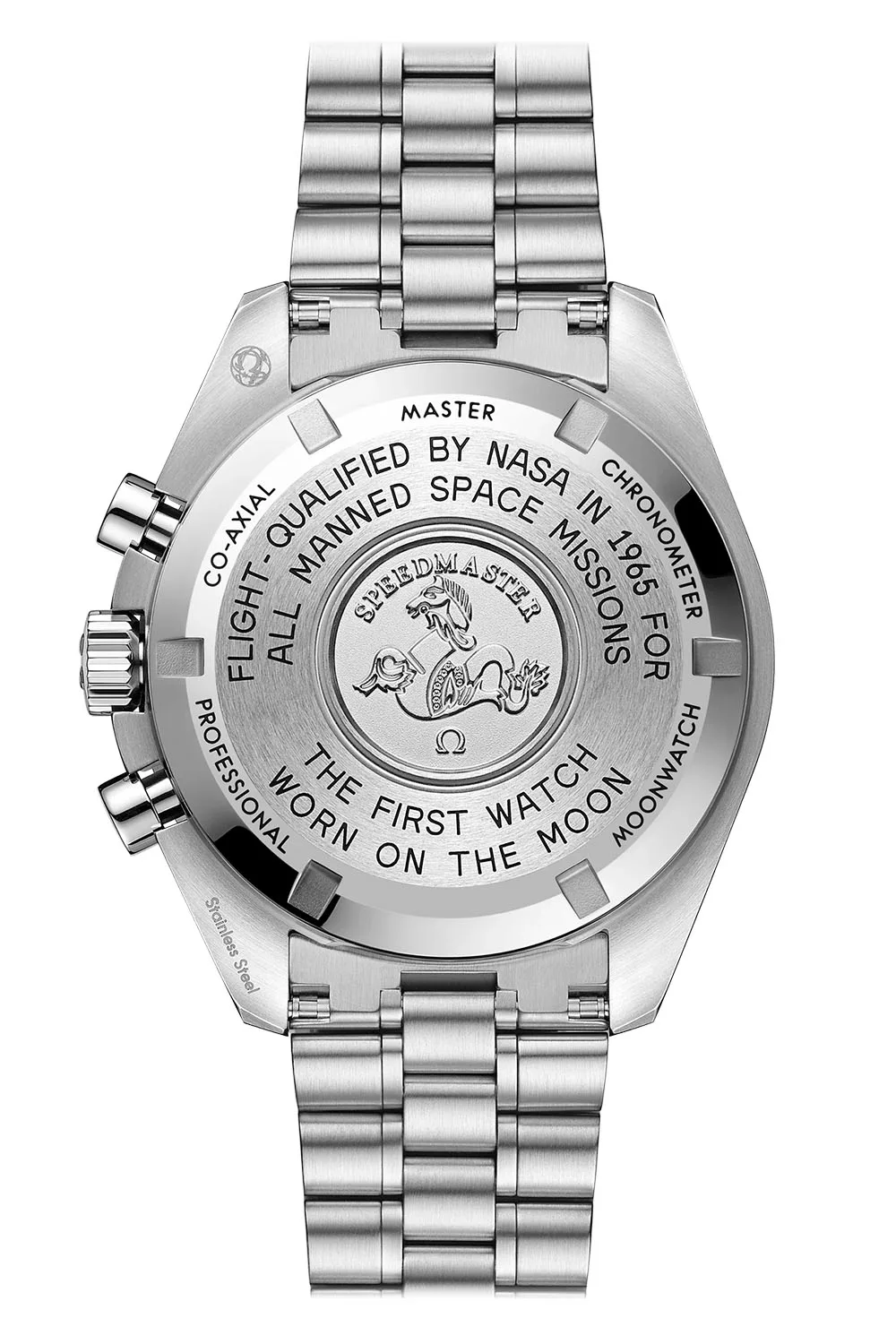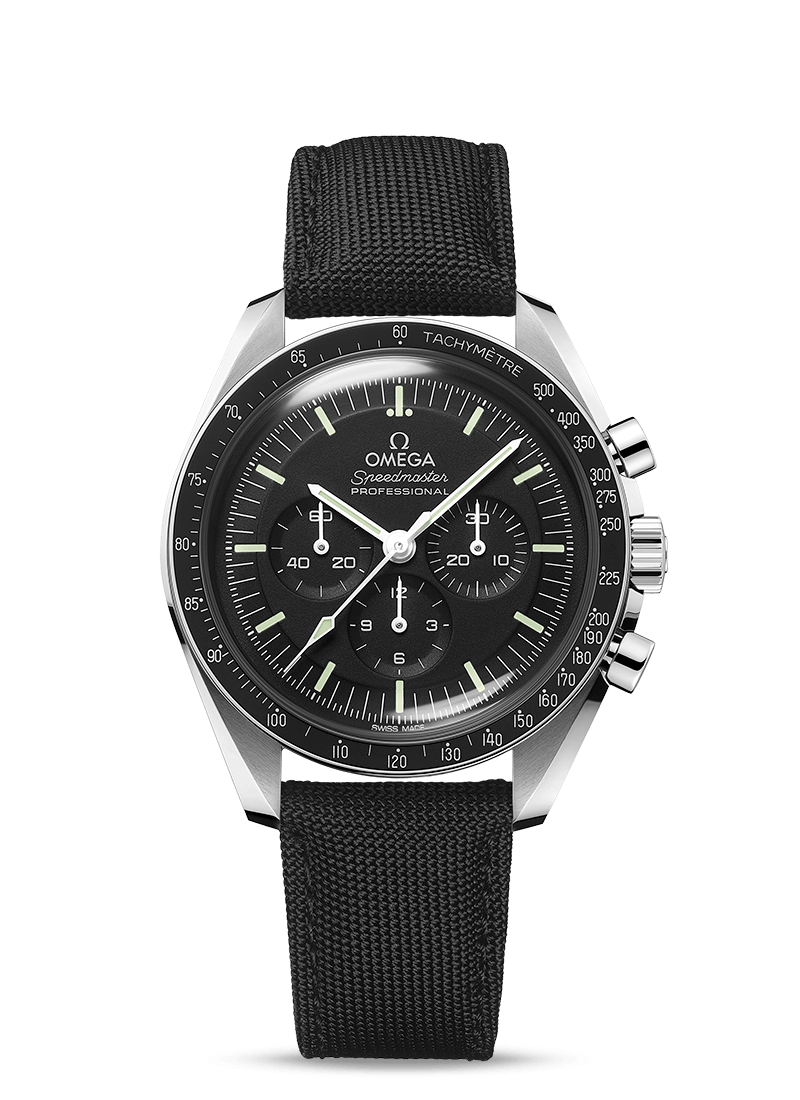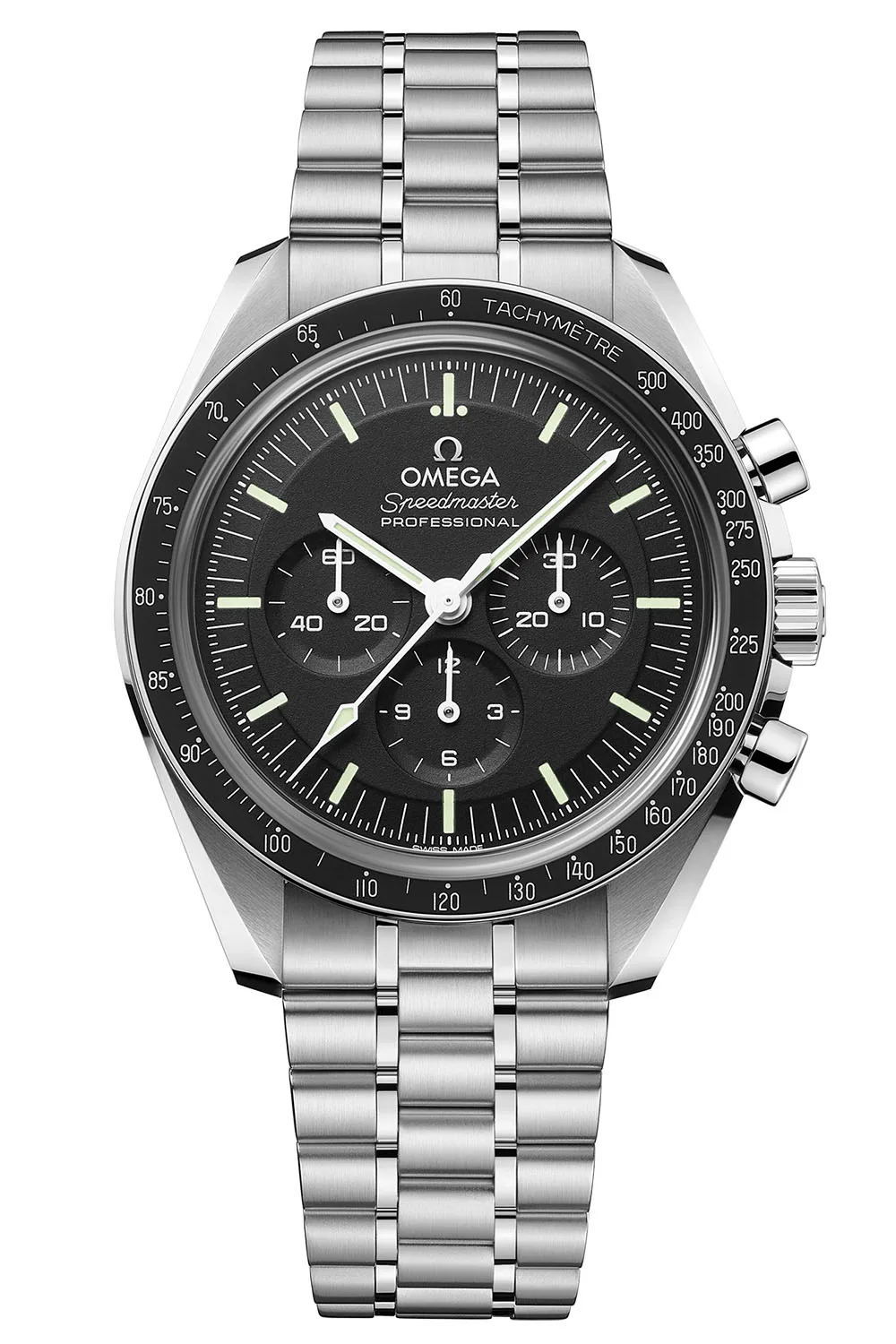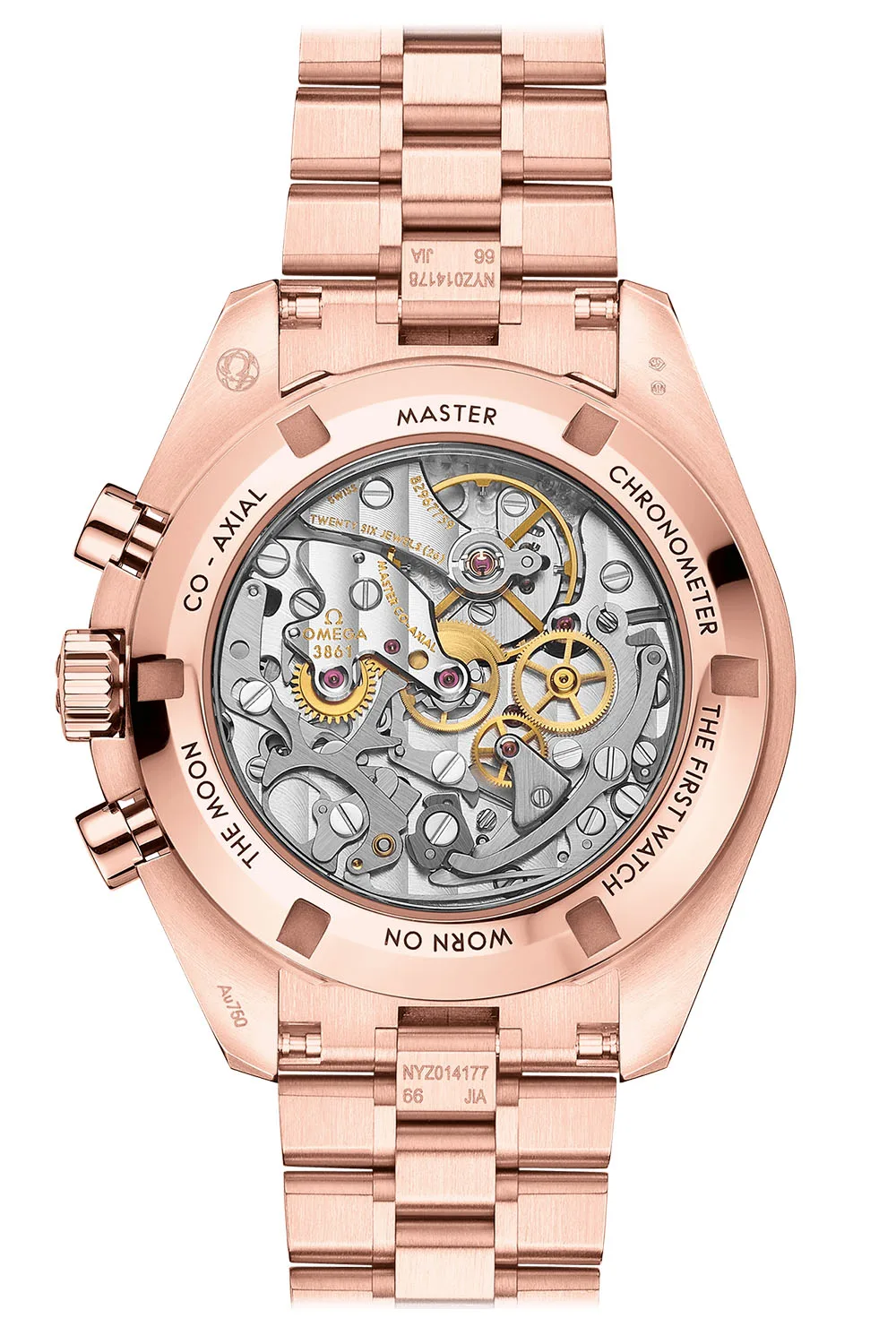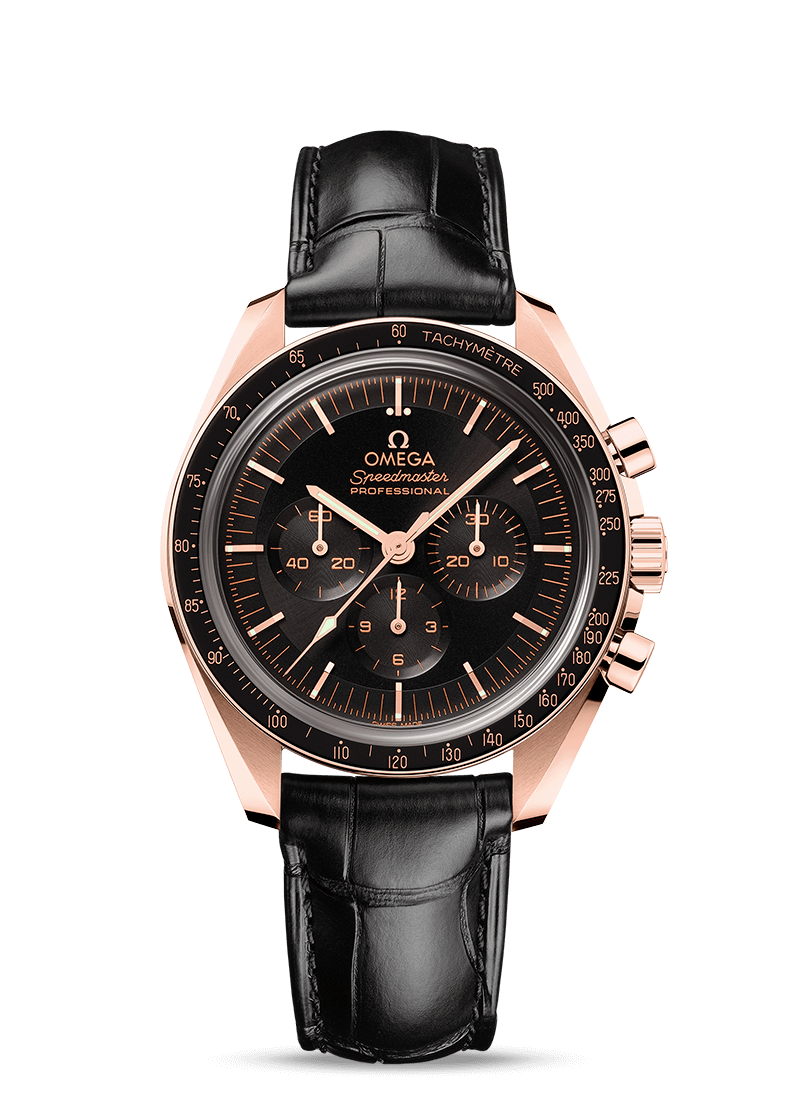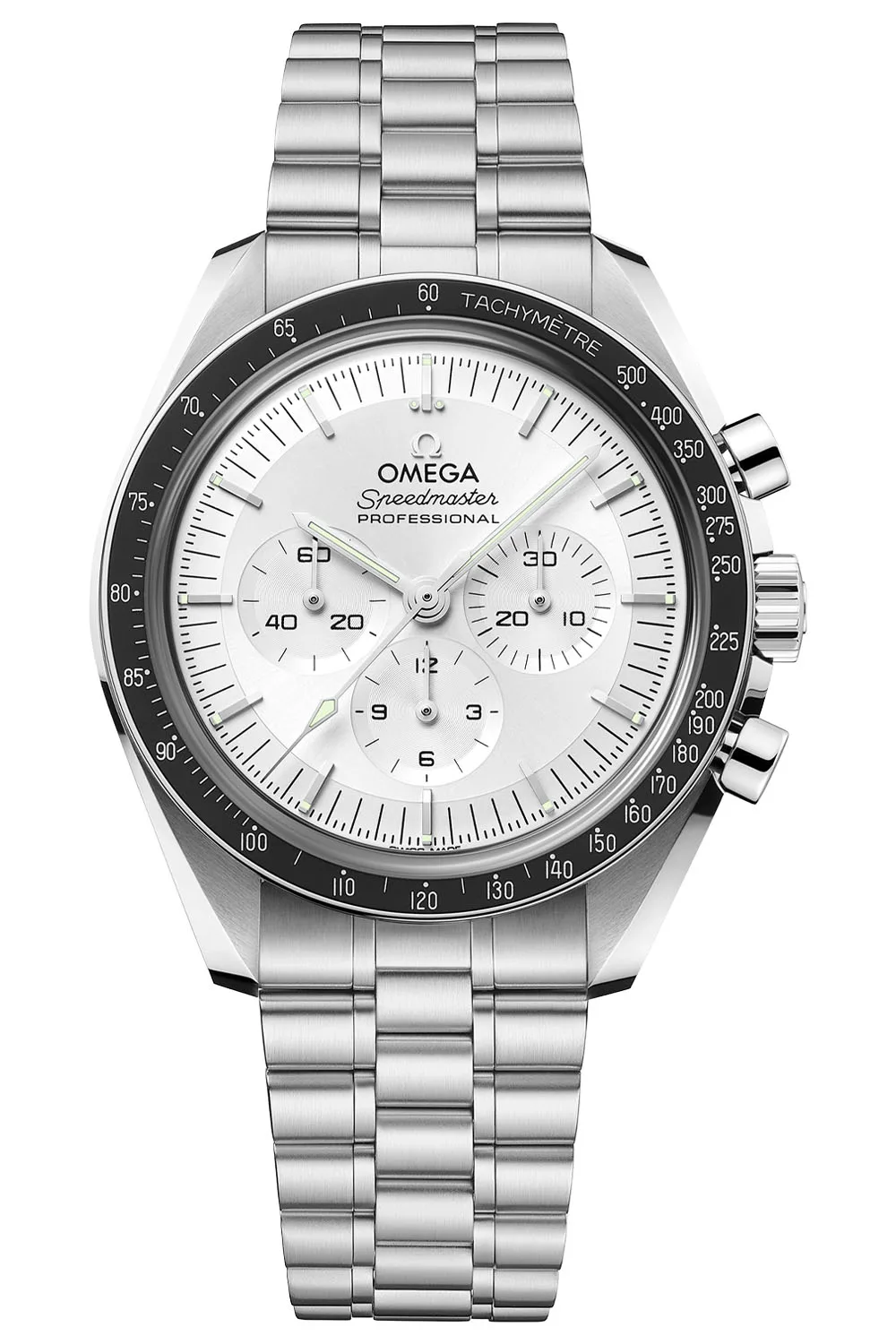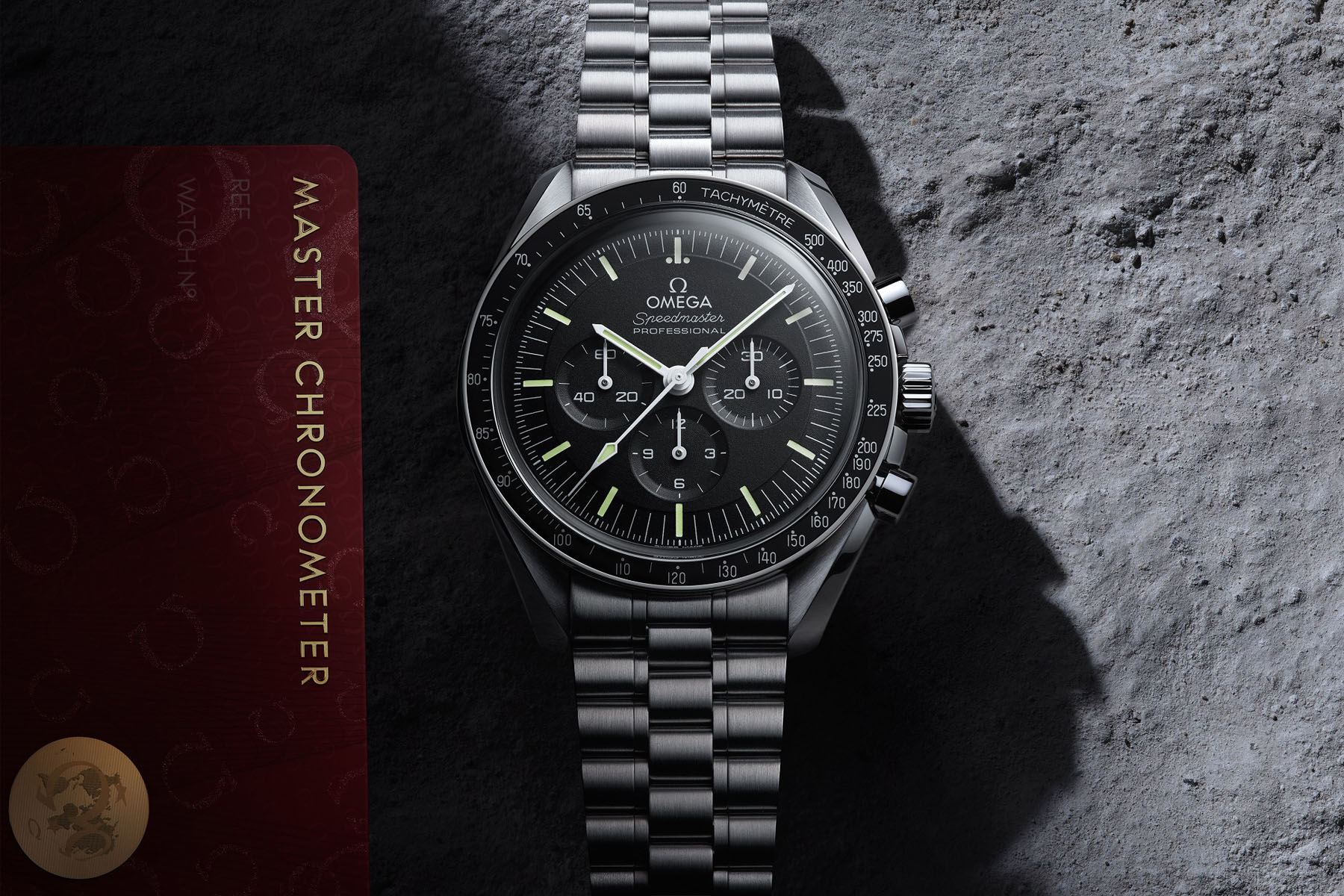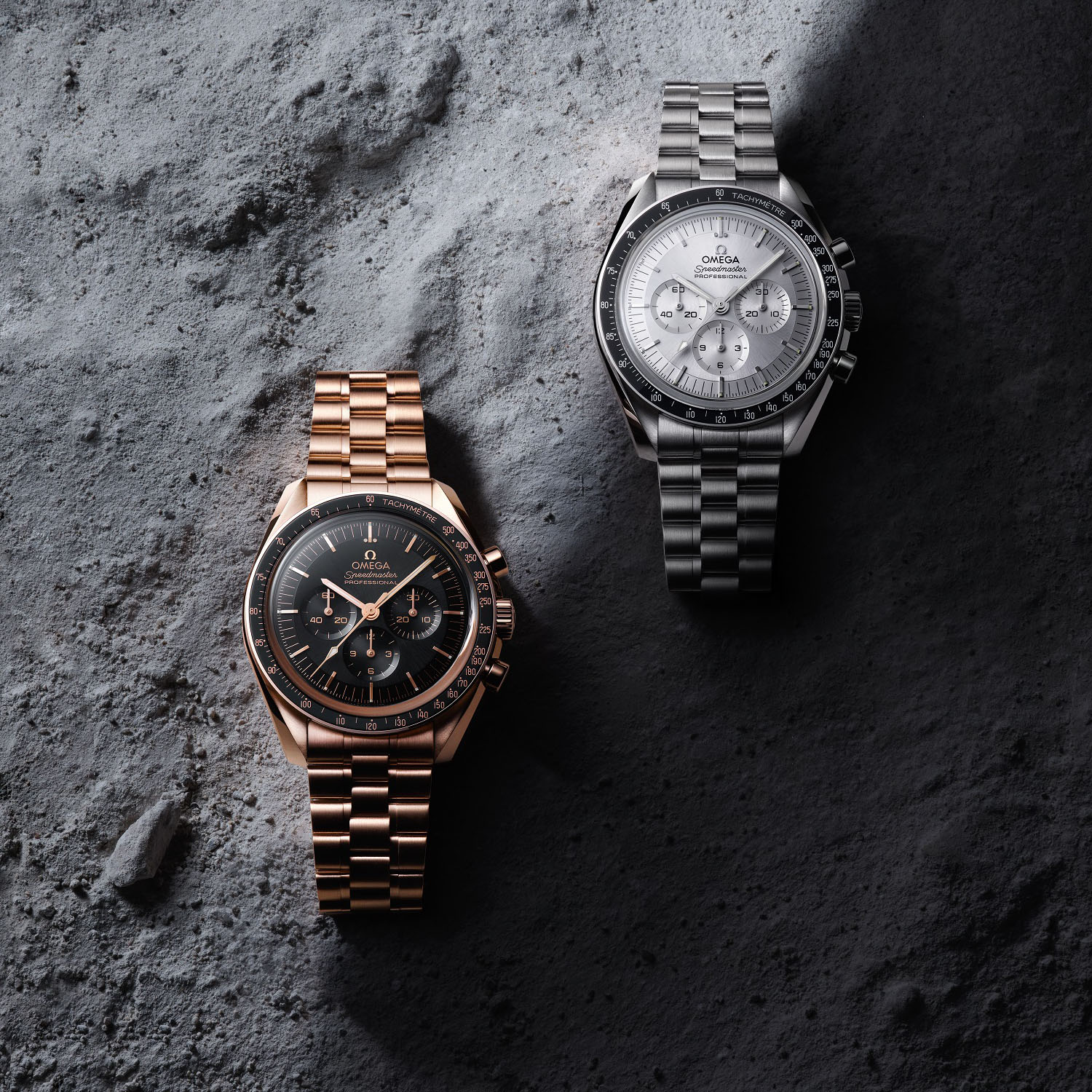BY HARLAN CHAPMAN-GREEN
So, the new Moonwatch has arrived. Did you know that we purposefully held off posting about this for a couple of days to collect our thoughts and get an idea of the fanbase’s reaction? Well, react you did, and now it’s time for us to talk about the new Speedy and weigh in on it. No pressure, then.
Let’s start with the watch before we get onto the opinions. This new model is a direct replacement for the old Speedmaster Moonwatch, which has been around since before time itself. The outgoing model had inside it the calibre 1861, a manually-wound chronograph movement featuring cams to operate the function. It was based on the Lemania calibre 1873, which has been used in a couple of TAG Heuers and a slew of Speedmasters.
The main upgrade to the new Speedmaster Moonwatch range is, undoubtedly, the movement. The 3861 inside the new Moonwatches is a heavily updated version of the 1861, meaning this calibre can still trace its roots back to the Lemania 1873. It first appeared in last year’s gold Apollo 11 anniversary watch, but now it’s in a serially-produced piece.
The 3861 is more accurate than the 1861 too. It’s been given the full Master Chronometer treatment, making this the very first time Omega has used the co-axial escapement in the standard Moonwatch. That means this watch has an accuracy deviation that’s certified to be between 0 and +5 seconds per day (as per METAS criteria, Master Chronometer-rated watches are not allowed to be behind in their rate of deviation). Omega’s used an assortment of silicone components and a free-sprung balance wheel with adjustable mass for a more accurate and reliable movement. As is also required by the METAS certification criteria, this watch is now anti-magnetic to 15,000 Gauss. The watch also has a slightly longer power reserve than before, going from 48-hours to 50-hours between winds and the beat rate sits at 3Hz.
Omega has updated the bracelets for the new Moonwatch range too. It’s now coming on a 5-link bracelet which is a little more classy and dressy than the outgoing model. Whether you think that’s a good thing or not is a personal choice, but I don’t see the Speedmaster as the go-anywhere-do-anything watch. I think that should be reserved for a Seamaster, while you enjoy the Speedmaster when you’re chilling afterwards. The bracelet receives some extra polishing for its links for the sapphire sandwich version, while other versions do not. It also has a retro-styled clasp which has been dividing the fans.
The old 1861-based Moonwatch came in a surprisingly wide array of versions which came in as Omega thought of them over the years. It seems clear that Omega has a fair few versions of this new 3861-powered version as it’s launching four different versions of the watch (excluding the strap options).
The range kicks off with the most historically-accurate version of the range, which features a hesalite (the original Speedmaster used a plastic hesalite crystal) and a closed caseback with the words Flight-qualified by NASA in 1965 for all manned space missions and The first watch worn on the moon engraved on it. It should be noted that all models feature that engraving, but only this one has a solid caseback that obscures the view of the movement. It’s available on a nylon strap for $5950 (£5100) and on the new bracelet for $6300 (£5370). The reference number is 310.32.42.50.01.001.
The next version is also made of stainless steel like the hesalite version, however, it comes with a sapphire crystal on the front and back, making it the new sapphire sandwich model. It has the reference number 310.30.42.50.01.001 and a price of $6800 (£5840) on the nylon strap or $7150 (£6120) on the steel bracelet.
Next are the two gold models. Omega is known for its speciality golds, and these are no different. The watch comes in Sedna gold, Omega’s proprietary blend of rose gold that doesn’t fade over time, and a black dial. This one has the reference 310.60.42.50.01.001 and a price of $34,800 (£29,840) for the solid gold watch with a solid gold bracelet. I don’t have official prices for either USD or Sterling for the strap version, but I’d expect a price reduction of about $10,000 (£7000). It’s only available in Omega’s boutiques.
The second gold model has the reference number 310.60.42.50.02.001 and is made of something called Canopus gold. We’ve seen this alloy before on the vintage-inspired Seamaster Olympic Games Gold collection of watches. Like Sedna gold, it’s a unique blend of white gold with a brilliant lustre and does not require rhodium plating, meaning its finish will last longer. This model can also be distinguished by the white dial, echoing Omega’s Silver Snoopy models. Annoyingly, I only have prices in CHF and Sterling for this one on the strap, but, I do have a USD price for the bracelet version. It will cost $45,300 (£38,830) on the bracelet, or CHF28,100 on the strap. This model, like the Sedna version, is only available in Omega’s boutiques.
Now we come to the opinion part. The Speedmaster Moonwatch was absolutely desperate for an update. There’s no argument there I feel. I’m not sure why Omega has waited so long to put their Co-Axial escapement in the Moonwatch, maybe they’ve had it ready to go for a while and have been waiting for the perfect time.
It would be wrong to say this watch is a complete overhaul, as the simple fact of the matter is there isn’t enough of a change in the design to say it is. Sure, the lugs have changed, and the pushers, and the bracelet/clasp, but it’s not like it’s unrecognisable. Maybe on the scale of the Speedmaster Moonwatches before it, we could say this is an overhaul. Yes, I am aware that they also use an applied Omega logo on all bar the hesalite versions, it’s just such a small detail I’m not bothered about I didn’t feel it was entirely worth it.
A couple of points perplex me with this one. Omega has opted to update the 1861 with the 3861 that has a more accurate balance assembly. However, they’re still using the old cam system to operate the chronograph in a world where most chronographs use a column wheel for a smoother operation. Yes, Omega is currently making the 321 calibre which does have a column wheel, but that’s being produced in low numbers for “exclusivity reasons”. Still, Omega had the chance to really bring the Speedmaster into the modern-day, but they held off going all the way.
I’m also perplexed by the fanbase slightly. Nearly everything I’ve seen so far has been support and praise for the new Speedmaster. Support for, what I feel, is a simple range update that needed to happen. Sure, Omega changed the appearance and updated the movement, but those things needed to keep the core Speedmaster Moonwatch relevant. When other brands such as, oh, I don’t know, Rolex, do the same thing everyone jumps up and down about how they don’t change much except the price. One could say that Omega has done a lot more than just the ‘necessities’, but the fact is that half of that work is the bracelet, and you don’t even have to buy that, negating most of the work they did. The 3861 calibre already existed, it came in last year (albeit with gold finishing as opposed to the rhodium we see here), so that means Omega has actually done even less. And yet, people don’t seem to have picked up on that.


